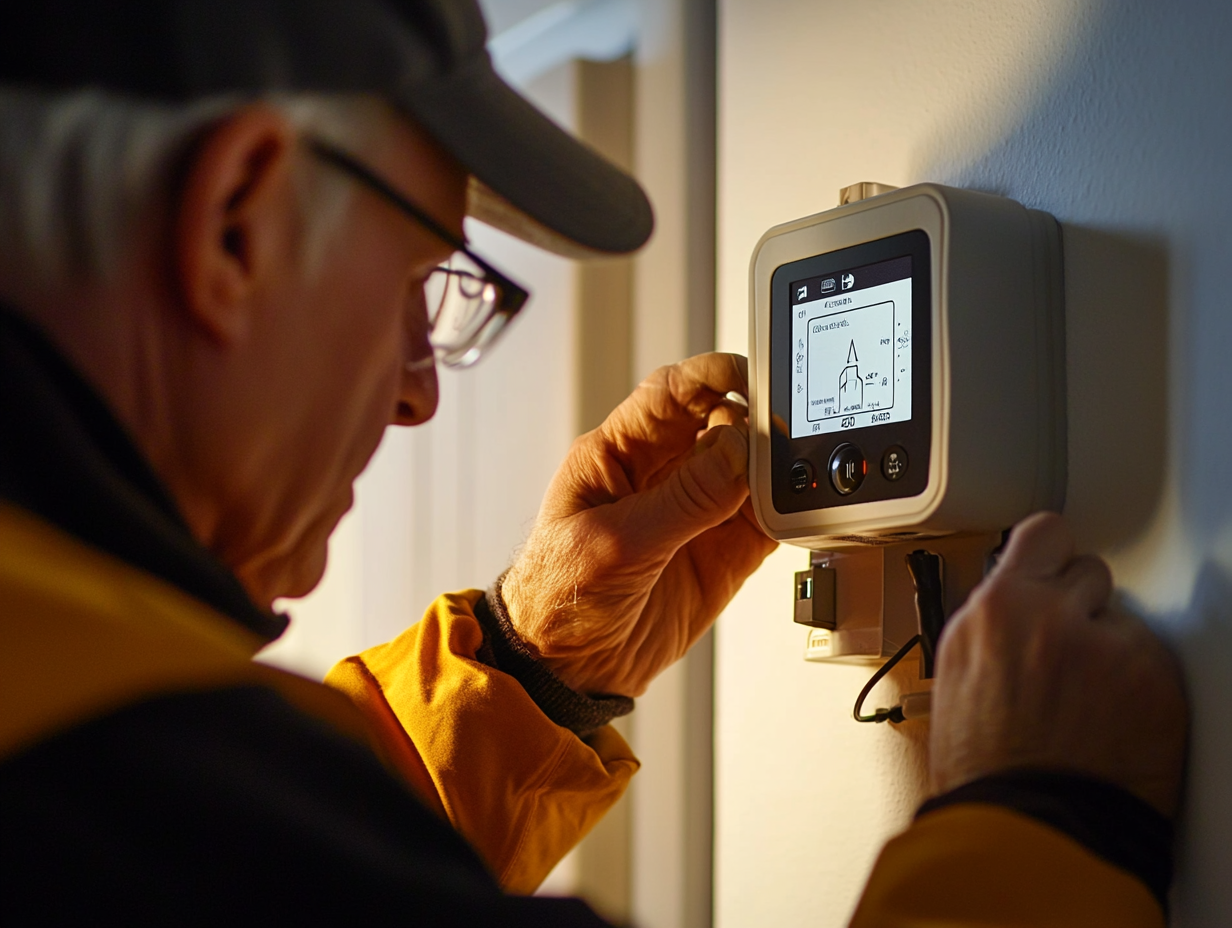
Non-Commodities Energy Charges Explained: What Business Leaders Need to Know
Estimated reading time: 10 minutes
Key Takeaways
- Understanding Non-Commodity Charges: These are additional costs beyond the actual energy consumed.
- Significant Impact on Bills: They can account for up to 60% of electricity bills and 40% of gas bills.
- Strategies for Reduction: Choosing the right supplier and implementing energy efficiency can mitigate costs.
- Financial Planning: Proper analysis of energy bills is crucial for managing expenses effectively.
- Stay Informed: Keeping up with policy changes can help businesses adapt and reduce costs.
Table of contents
- Non-Commodities Energy Charges Explained: What Business Leaders Need to Know
- Key Takeaways
- What Are Non-Commodity Energy Charges?
- Third-party Charges on Energy Bills
- Breakdown of a Business Energy Bill
- Impact of Non-Commodity Charges on Business Energy Costs
- Strategies for Reducing Non-Commodity Charges
- Business Energy Bill Analysis
- Conclusion
- FAQs About Non-Commodities Energy Charges
What Are Non-Commodity Energy Charges?
Non-commodity energy charges are the additional costs on your energy bill beyond the price of the energy you consume. These charges are essential for covering various aspects of energy delivery, infrastructure maintenance, and government policies. Here are some key points to understand about non-commodity energy charges explained:
- Definition: Non-commodity charges include all expenses for distributing energy, maintaining infrastructure, and implementing policy-driven regulations. These charges include, but are not limited to:
- Transmission and distribution costs
- Network maintenance fees
- Environmental and social obligation costs
- Balancing costs
- Metering charges
- These charges are different from commodity charges, which fluctuate based on energy market prices and your actual usage. Non-commodity charges are often fixed or regulated costs that your energy supplier passes through.
Third-party Charges on Energy Bills
Third-party charges are additional fees imposed on energy bills that help maintain and balance the energy market. Examples of third-party charges on energy bills include:
- Balancing Services Use of System (BSUoS)—costs associated with balancing the supply and demand of electricity.
- Capacity Market charges—fees implemented to ensure there is enough electricity available during peak times.
Understanding this distinction is vital for businesses, as non-commodity charges can significantly influence overall energy expenses.
Breakdown of a Business Energy Bill
Understanding your business energy bill is key to identifying cost-saving opportunities. Here’s a detailed breakdown of a typical business energy bill.
Commodity Charges
Commodity charges are the costs associated with the actual energy consumed by your business. They are calculated based on your energy usage, measured in kilowatt-hours (kWh) for electricity or therms for gas. This portion of your bill directly fluctuates with changes in energy consumption and market prices.
Non-Commodity Charges
- Distribution and Transmission Costs
- These costs cover transporting energy from generation stations to your business. They help maintain the national grid and local networks, ensuring reliable energy delivery. Distribution and transmission costs are crucial in covering the infrastructure that supports energy services.
- Policy Levies and Taxes
- Businesses are often responsible for a range of policy-related charges, including:
- Climate Change Levy (CCL): A tax on energy use intended to encourage businesses to reduce their carbon emissions.
- Renewables Obligation (RO): A governmental mechanism aimed at increasing the amount of renewable electricity generated in the UK.
- Contracts for Difference (CfD): A contract mechanism to promote investment in low-carbon electricity generation.
- Feed-in Tariffs (FiT): Payments to households or businesses for generating their electricity through renewable sources.
- Businesses are often responsible for a range of policy-related charges, including:
- Third-Party Charges
- Third-party charges on energy bills are important costs that can directly impact overall expenditure. They include:
- Balancing Services Use of System (BSUoS): Costs related to managing the balance between electricity consumption and generation.
- Capacity Market Charges: Payments made to ensure that electricity generation capacity is available when needed.
- Third-party charges on energy bills are important costs that can directly impact overall expenditure. They include:
Impact of Non-Commodity Charges on Business Energy Costs
Non-commodity charges significantly impact business energy costs. In fact, they can account for up to 60% of electricity bills and 40% of gas bills for UK businesses. Understanding the impact of non-commodity charges on business energy costs is crucial for financial planning.
- Misconceptions: Many businesses believe that reductions in wholesale energy prices will immediately lower their overall bills. However, this is misleading. Fixed non-commodity charges may remain unchanged, meaning your total bill might not decrease proportionally despite lower energy prices.
- Financial Impact: Research indicates that fluctuations in non-commodity charges can have severe implications for businesses. For instance, a recent study illustrated that a 10% rise in non-commodity charges could increase overall energy costs by thousands of pounds annually for medium-sized enterprises (source: 1, 2).
Strategies for Reducing Non-Commodity Charges
While many non-commodity charges are unavoidable, there are effective strategies businesses can implement to mitigate their financial impact. Here are some practical strategies for reducing non-commodity charges:
1. Choose the Right Supplier
Selecting the right energy supplier can significantly affect your non-commodity costs. Some suppliers offer fixed or lower non-commodity rates, allowing for more predictable billing. Choosing the Best Retail Energy Suppliers: A Guide for Shop Owners can help you research your options and negotiate terms to yield considerable savings over time.
2. Engage in Energy Efficiency Practices
Implementing energy efficiency measures can help reduce overall energy consumption, leading to lower usage-based non-commodity charges. Simple steps like upgrading lighting, using energy-efficient appliances, and encouraging energy-saving practices among employees can make a difference. Consider exploring Commercial Energy Efficiency Retrofits: The Key to Sustainability and Cost Savings for more insights.
3. Explore Demand Response Programs
Participating in demand response programs can help businesses shift energy usage to off-peak times, thereby reducing specific charge impacts. These programs often offer financial incentives and can lead to decreased operational costs.
4. Investigate Legislative or Policy Changes
Staying informed about changes in energy legislation and policies can help businesses anticipate shifts in non-commodity charges. Building relationships with energy councils or regulatory agencies can ensure your business remains compliant and ideally positioned to adapt. Additionally, Exploring Renewable Energy Options for Businesses: A Comprehensive Guide provides valuable information on how renewable energy can influence policy-related charges.
Business Energy Bill Analysis
Conducting a thorough analysis of your business energy bill is essential for effectively managing costs. Here’s how to approach a comprehensive energy bill analysis:
Understand Your Energy Costs
- Examine Line Items: Review each line item on your bill, clearly identifying both commodity and non-commodity charges. Understanding where your money goes is the first step towards identifying savings.
- Track Bill Trends: Compare bills over time to pinpoint trends or unexpected increases. Look for patterns in energy consumption and charges to make informed decisions. Utilize Energy Consumption Data Analytics: How Businesses Can Achieve Efficiency and Cost Savings tools to enhance your analysis.
Utilize Tools and Resources
- Energy Management Software: Utilize energy management software to track consumption and costs accurately. These tools provide valuable insights into your energy usage and help detect inefficiencies.
- Consult Energy Experts: Consider consulting with energy professionals for a detailed analysis of your bills and recommendations for cost-saving strategies. Professionals can offer valuable expertise in navigating pricing structures and identifying potential savings.
Best Practices
- Regularly schedule time to review your energy bills and identify discrepancies.
- Keep records of bills to analyze cost trends over time.
- Engage staff in energy awareness programs to promote collective efficiency.
Conclusion
Understanding non-commodity energy charges is essential for effective business cost management. These charges can significantly influence your overall energy expenditure; therefore, breaking down these charges and implementing targeted strategies can lead to better control of your energy costs.
Taking action now—by analyzing your energy bills and seeking professional guidance—can help you identify opportunities for savings and efficiency. For personalized advice on managing your business energy expenses, consider reaching out to energy consultants who can provide tailored solutions specific to your needs.
FAQs About Non-Commodities Energy Charges
Q1: What are non-commodity energy charges?
A1: Non-commodity energy charges refer to the additional costs on your energy bill that go beyond the actual energy consumption. These charges include delivery costs, taxes, and regulatory fees.
Q2: Why are non-commodity charges important for businesses?
A2: Non-commodity charges can constitute a substantial portion of total energy expenses, making it essential for businesses to understand and manage these costs effectively.
Q3: How can I reduce non-commodity charges?
A3: Businesses can reduce non-commodity charges by choosing the right energy supplier, engaging in energy efficiency practices, participating in demand response programs, and staying informed about legislative changes.
Q4: How do I analyze my business energy bill?
A4: Review each line item to understand your charges, compare bills over time, use energy management tools, and consult energy experts for comprehensive analysis and recommendations.
Understanding non-commodity energy charges explained above can empower business leaders to make informed decisions about energy management, ultimately driving cost savings and operational efficiency.













